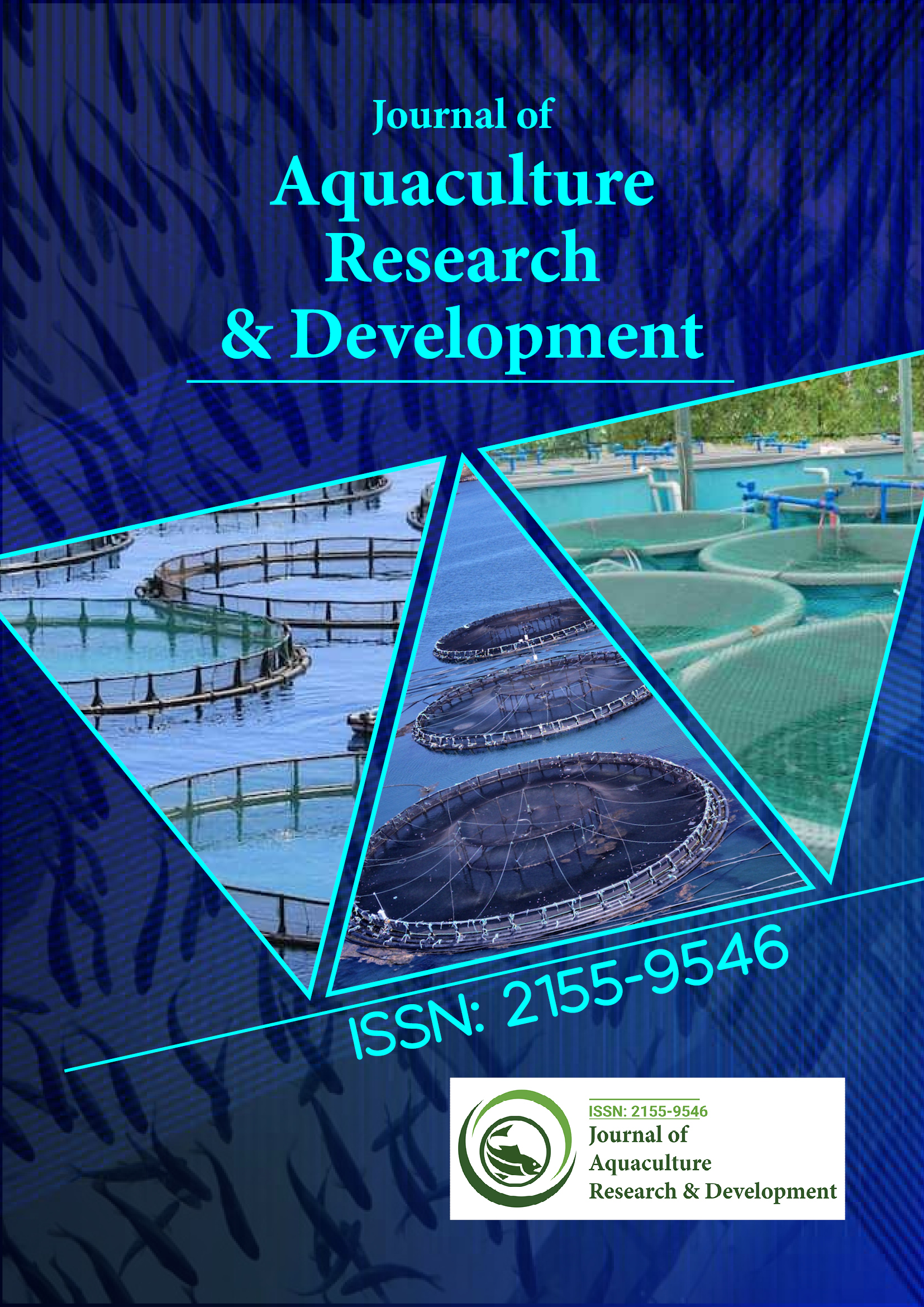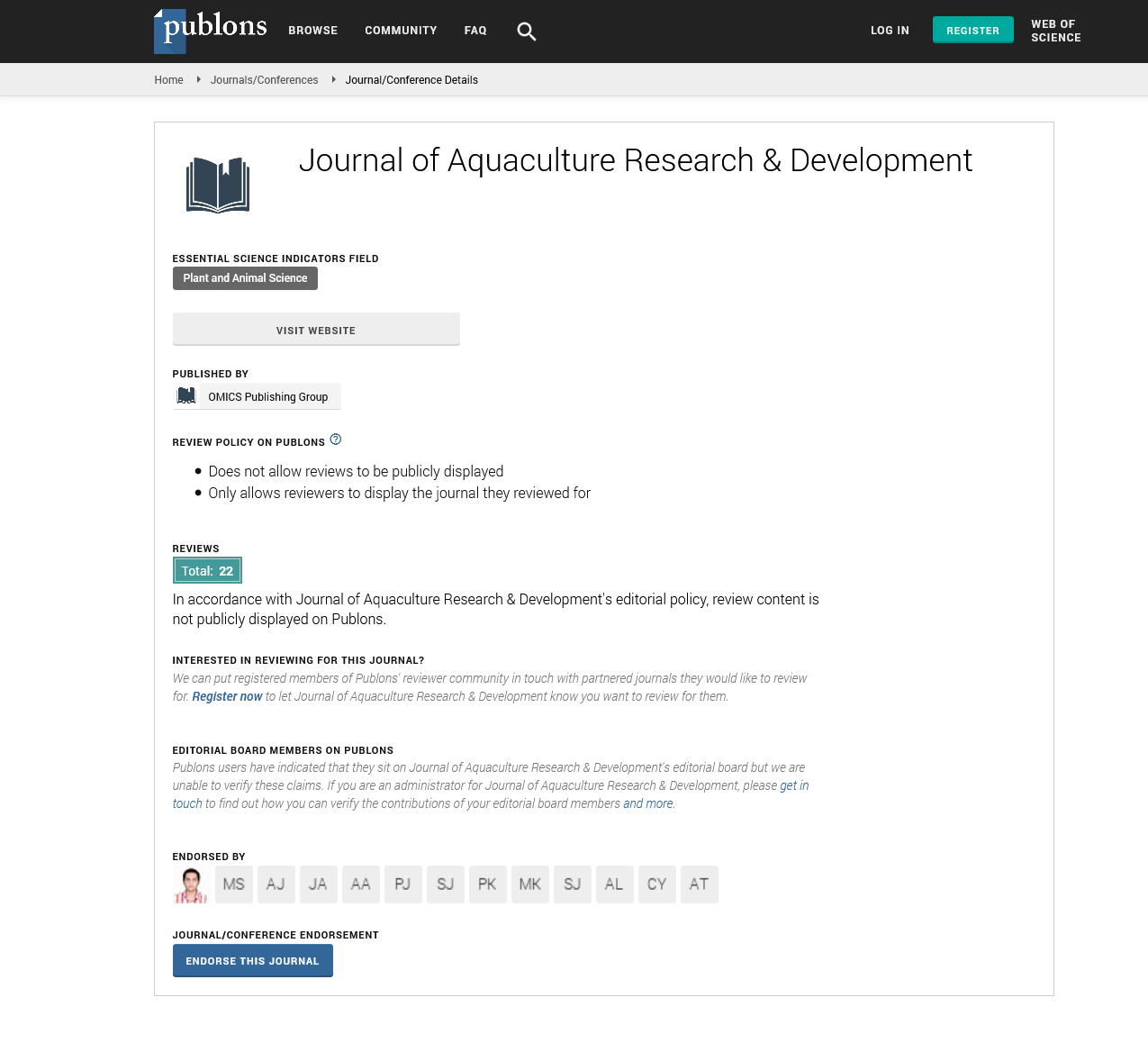Indexed In
- Online Access to Research in the Environment (OARE)
- Open J Gate
- Genamics JournalSeek
- JournalTOCs
- Scimago
- Ulrich's Periodicals Directory
- Access to Global Online Research in Agriculture (AGORA)
- Electronic Journals Library
- Centre for Agriculture and Biosciences International (CABI)
- RefSeek
- Directory of Research Journal Indexing (DRJI)
- Hamdard University
- EBSCO A-Z
- OCLC- WorldCat
- Scholarsteer
- SWB online catalog
- Virtual Library of Biology (vifabio)
- Publons
- MIAR
- University Grants Commission
- Euro Pub
- Google Scholar
Useful Links
Share This Page
Journal Flyer

Open Access Journals
- Agri and Aquaculture
- Biochemistry
- Bioinformatics & Systems Biology
- Business & Management
- Chemistry
- Clinical Sciences
- Engineering
- Food & Nutrition
- General Science
- Genetics & Molecular Biology
- Immunology & Microbiology
- Medical Sciences
- Neuroscience & Psychology
- Nursing & Health Care
- Pharmaceutical Sciences
Commentary - (2025) Volume 16, Issue 5
Optimizing Aquaculture Systems for Efficiency and Health
Annick Harel*Received: 28-Apr-2025, Manuscript No. JARD-25-29678 ; Editor assigned: 01-May-2025, Pre QC No. JARD-25-29678 (PQ); Reviewed: 15-May-2025, QC No. JARD-25-29678 ; Revised: 22-May-2025, Manuscript No. JARD-25-29678 (R); Published: 29-May-2025, DOI: 10.35248/2155-9546.25.16.989
Description
Aquaculture plays a significant role in meeting the global demand for fish and seafood, contributing to food security, income generation and sustainable livelihoods. With the global population expected to reach nearly 10 billion by 2050, production systems must evolve to provide sufficient, high-quality protein while minimizing environmental impact. Nanotechnology has emerged as a promising approach to address challenges in aquaculture by enhancing production efficiency, improving fish health, reducing environmental hazards and ensuring safe and sustainable food supplies.
Nano-enhanced feed and nutrition
Nutrition is a key factor affecting growth, immunity and survival in aquaculture species. Nanotechnology enables the development of nano-formulated feed and additives that improve nutrient bioavailability. For example, nanoencapsulation allows vitamins, minerals and probiotics to be delivered more efficiently, reducing nutrient losses and enhancing absorption. Nanoemulsions of fatty acids and essential oils can improve palatability and provide sustained release of nutrients. This approach ensures that farmed fish receive optimal nutrition, supporting growth and immune function while reducing feed wastage. Additionally, targeted delivery of bioactive compounds through nanoparticles may help modulate gut microbiota, enhancing digestive efficiency and disease resistance.
Water quality management
Maintaining high water quality is essential for optimal growth and survival in aquaculture. Nanotechnology provides innovative solutions for water purification and pollutant removal. Nanomaterials such as titanium dioxide, zinc oxide and carbon nanotubes can remove organic pollutants, heavy metals and pathogens from aquaculture systems.
Nanofilters and nanosensors allow continuous monitoring of water quality parameters, including ammonia, nitrite, dissolved oxygen and pH. Early detection of deviations enables prompt interventions, reducing stress and mortality in cultured species. These technologies also minimize the need for chemical treatments, promoting environmentally sustainable practices.
Disease prevention and health management
Disease outbreaks are a major threat to aquaculture production. Nanotechnology offers tools for disease prevention, diagnosis and treatment. Nano-formulated vaccines improve antigen stability, enhance immune responses and allow controlled release, resulting in better protection against bacterial and viral infections.
Antimicrobial nanoparticles, such as silver and chitosan-based nanomaterials, exhibit strong inhibitory effects against pathogens in water and feed. Nano-based drug delivery systems facilitate targeted administration of therapeutics, reducing dosage requirements and minimizing environmental contamination. Furthermore, nanodiagnostic devices enable rapid detection of pathogens at early stages, allowing timely intervention and preventing large-scale losses.
Biosensors and monitoring
Nanotechnology contributes to the development of advanced biosensors for aquaculture monitoring. Nanoscale sensors can detect pathogens, toxins and pollutants at very low concentrations, providing real-time data to farmers. Integration with wireless and IoT systems allows remote monitoring of pond or tank conditions. Farmers can track water quality, fish health and feeding patterns simultaneously, supporting data-driven decision-making. These technologies improve operational efficiency, reduce labor demands and help maintain optimal conditions for fish growth.
Nanotechnology in biosecurity
Biosecurity is essential for disease control and environmental protection in aquaculture. Nanocoatings and nanomaterials can be used to prevent biofilm formation on tanks, nets and pipelines, reducing pathogen accumulation.
Nano-based disinfectants and antimicrobial surfaces help maintain sterile environments, lowering the risk of disease transmission. Such applications contribute to sustainable farming practices by reducing reliance on chemical disinfectants, which may have negative ecological impacts.
Genetic and reproductive applications
Emerging research demonstrates the potential of nanotechnology in genetic studies and reproduction management in aquaculture species. Nanoparticles can be used as carriers for gene editing molecules or reproductive hormones, improving the efficiency of selective breeding and controlled reproduction programs.
These approaches support the development of robust, fast-growing and disease-resistant fish strains, enhancing productivity while maintaining genetic diversity. Nanocarriers also enable precise delivery of nucleic acids or proteins to target tissues, reducing side effects and improving outcomes in experimental aquaculture applications.
Nanotechnology is transforming aquaculture by providing tools to improve productivity, fish health and environmental management. Applications in feed, water quality, disease prevention, biosensing and reproduction management demonstrate significant potential for enhancing efficiency and sustainability in fish farming.
Citation: Harel A (2025). Optimizing Aquaculture Systems for Efficiency and Health. J Aquac Res Dev. 16:989.
Copyright: © 2025 Harel A. This is an open-access article distributed under the terms of the Creative Commons Attribution License, which permits unrestricted use, distribution, and reproduction in any medium, provided the original author and source are credited.

